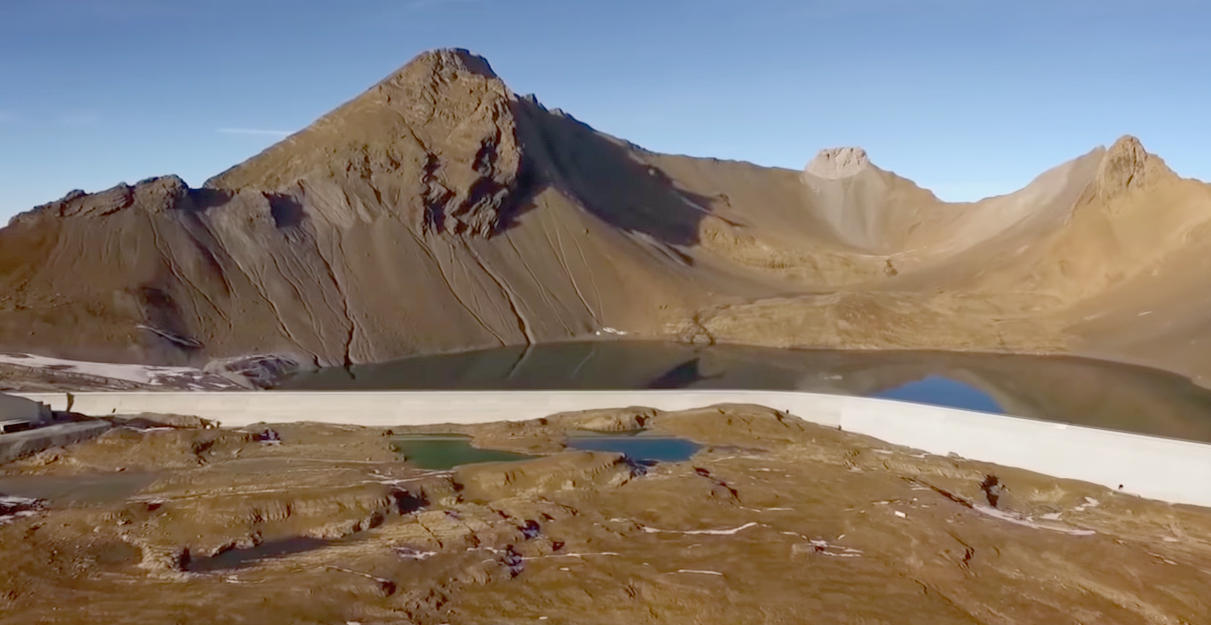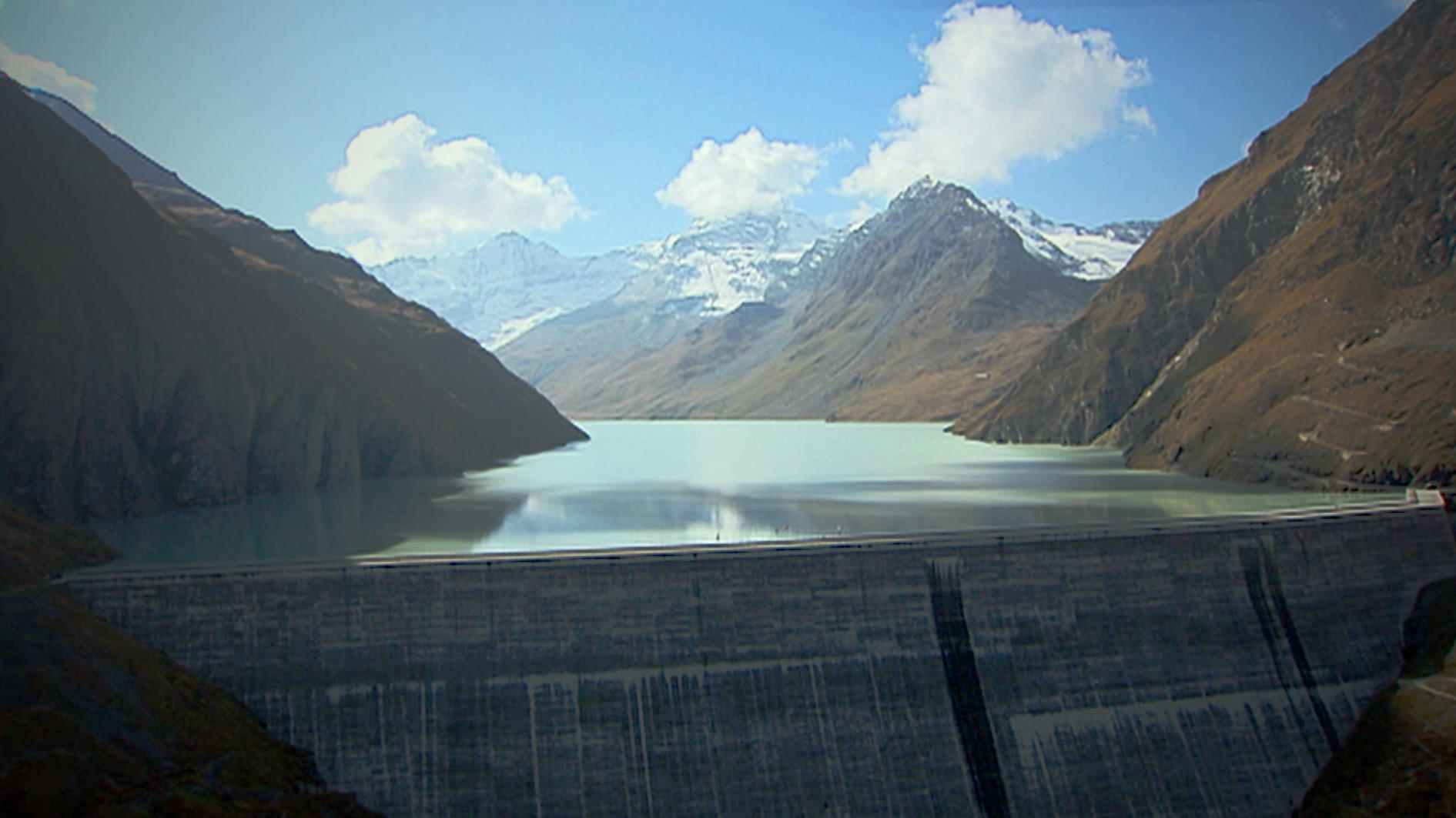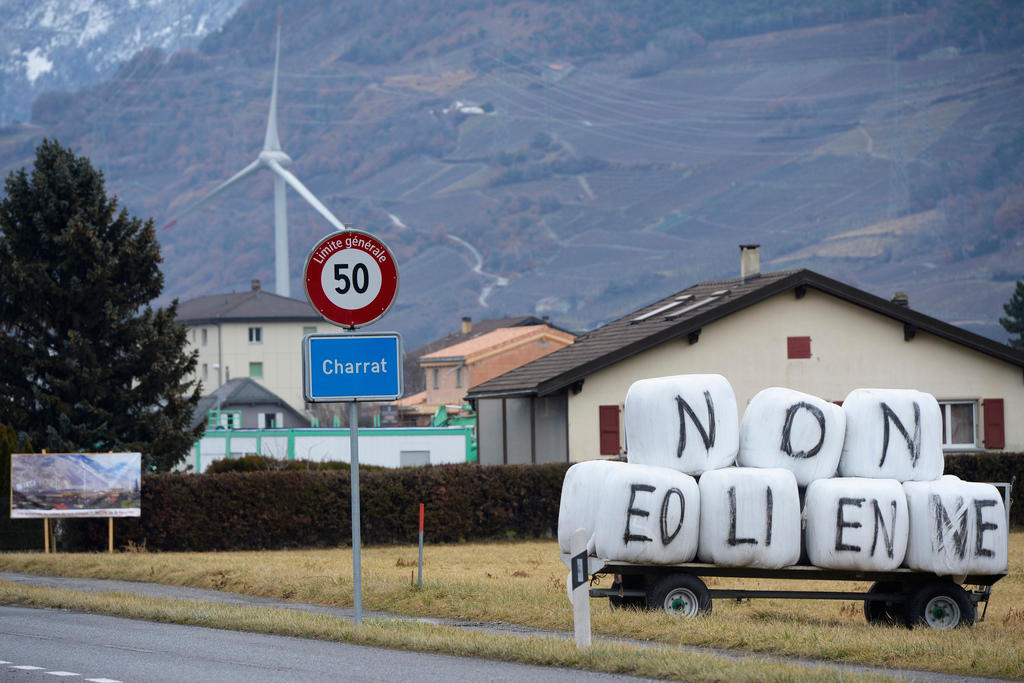The largest Swiss dam – and the riskiest

The electrical group Axpo inaugurated the largest pumped storage system in Switzerland on Friday in canton Glarus.
The electricity from this dam will compensate for fluctuations in wind and solar energy produced elsewhere in Europe. But there’s a big risk that this project becomes a financial drain.
The product of 10 years of planning and construction, Linthal 2015 represents, from a technical point of view, an important step in the development of hydro-power in Switzerland. It’s an energy source that has become a major contributor to the country’s economic development during the last century.
Today there are more than 600 hydroelectric power plants that provide 56% of the electricity produced on Swiss territory. In Europe, only Norway and Austria have higher proportions.
The most powerful
With an output of 1,000 megawatts, Linthal 2015 will become the largest Swiss dam with a pumping system. In Switzerland, there are nearly 100 water impoundments for electricity generation, but only 15 are equipped with a pumping system.
These so-called pumped storage systems use two pools, one upstream and one downstream. The water stored in the upper reservoir is released into the valley to produce electricity. It is then pumped back into the upper reservoir. Pumped systems are important to ensure a stable electricity production when water is lacking, especially during the winter months.
The highest
The lower basin, the Limmernsee, is an artificial lake built a half-century ago at 1,857 metres high. It can produce up to about 500 megawatts of electricity. The Muttsee, the upper basin inaugurated on Friday, is at an altitude of 2,474 metres, making it the highest artificial lake in Europe. This enables the potential energy production of the hydro-electric plant to be tripled.
The construction of the dam’s embankment and underground pumping system that connects the two basins of the Glarus Alps have presented an impressive engineering challenge. It took a major gondola to get machinery and equipment to this altitude.
It also required tunnels and pipes for pumping water. Workers dug a tunnel 4 kilometres long to transport 200 to 300 tonnes of transformers and generators in two caves 50 metres high. In total, CHF2.1 billion ($2.15 billion) was invested in creating this new hydro-electric plant. By comparison, the new Gotthard rail tunnel, which opened in June, cost six times as much.
The longest
The most spectacular element of the new facility is undoubtedly the dam wall, at 1,025 metres the longest in Switzerland, along the Muttsee reservoir. The dam allows the reservoir to be tripled to up to 25 million cubic metres of water.
It’s been 26 years since an artificial dam was built in the Swiss mountains. With the commissioning of five nuclear power plants between 1969 and 1984, interest in the construction of new water reservoirs fell significantly. Investments in this sector have been reviving in the past ten years, encouraged by the prospects for development of new renewable energy in Europe.
The storage basins, particularly those with a pumping system, appear to be an ideal solution to compensate for output fluctuations of wind and solar energy in Europe. Water is pumped uphill when there is overproduction of energy and the prices are low. It is then used to generate electricity when other energy sources become scarcer and prices rise. These facilities could thus play a role in the development of electric power for Switzerland and other European countries.
The biggest financial hole?
These pumped water systems now supply about 5% of the electricity produced in Switzerland. Production capacity will be more than doubled with the inauguration of Linthal 2015 and two other major facilities under construction: Nant de Drance in the canton of Valais (constructed by Alpiq) and Veytaux in the canton of Vaud (developed by Hongrin-Léman).
For several years, however, serious doubts have arisen as to the viability of these power plants. Given the enormous amount of energy required to transport water upstream, these pumping systems are profitable only if there is a marked difference in the price of electricity between the hours of high and low demand. In recent years, this difference has been greatly reduced due to frequent electricity overproduction in Europe.
Linthal 2015 and some other projects pose a financial risk for Swiss electricity companies already struggling for several years to gain market position. “It will take 10 years or more for Linthal 2015 to be profitable,” the CEO of Axpo, Andrew Walo, said. The electric company benefits from a concession that will last until 2096 for the plant’s operation. As a result, the company has 80 years to prove that it is not mistaken in its calculations.
(Traduction de l’italien: Samuel Jaberg)

In compliance with the JTI standards
More: SWI swissinfo.ch certified by the Journalism Trust Initiative












You can find an overview of ongoing debates with our journalists here . Please join us!
If you want to start a conversation about a topic raised in this article or want to report factual errors, email us at english@swissinfo.ch.